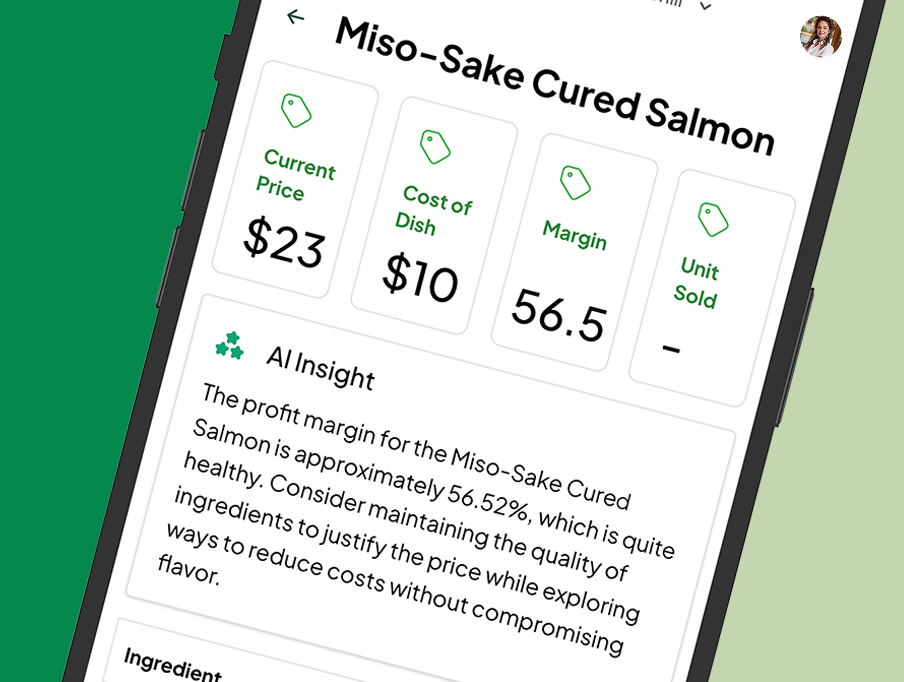Running a restaurant in today’s economic climate is no easy feat. Labor costs are rising, food prices are volatile, and ingredients spoil quickly. The pressure to keep customers happy while staying profitable can feel like an impossible balancing act. Yet, with strategic menu planning and a focus on cost-effective, shelf-stable ingredients, restaurant owners can achieve profitability without sacrificing quality or creativity.
The Challenge: Rising Costs and Expiring Inventory
Labor and food costs are two of the largest expenses for any restaurant. With inflation and supply chain disruptions, these costs have surged, leaving many restaurant owners scrambling to maintain profitability.
Compounding this issue is food waste. Perishable ingredients can spoil before they’re used, leading to significant financial loss. A study by the National Restaurant Association found that food waste accounts for up to 10% of restaurant food costs.
This isn’t just a financial issue—it’s an environmental one. Restaurants must balance profitability with sustainability, reducing waste while managing rising costs.
The Solution: Smarter Menus and Shelf-Stable Ingredients
1. Focus on Cost-Effective Ingredients
Creating a menu that emphasizes affordable, versatile ingredients is key. Here are some tips:
- Embrace plant-based proteins. Ingredients like lentils, chickpeas, and tofu are cost-effective, have long shelf lives, and appeal to the growing number of health-conscious diners.
- Highlight grains and starches. Rice, pasta, and quinoa are inexpensive, filling, and highly versatile. Pairing these with proteins or vegetables can create hearty dishes with high profit margins.
- Opt for frozen and canned goods. Frozen vegetables and canned beans retain their nutritional value and can be stored longer, reducing waste.
2. Use Shelf-Stable Ingredients Wisely
Shelf-stable ingredients aren’t just about cost savings—they also offer consistency and reduce the risk of spoilage.
- Sauces and condiments. Use ingredients like soy sauce, hot sauce, or canned tomatoes as the base for multiple dishes.
- Dried herbs and spices. These add flavor without taking up valuable fridge space or expiring quickly.
- Preserved proteins. Smoked salmon, cured meats, and shelf-stable cheese can add variety to menus while reducing spoilage.
3. Creative Menu Engineering
A well-designed menu isn’t just about offering great food—it’s a financial strategy.
Streamline the Menu
- Cut low-performing items. Analyze sales data to identify dishes that don’t sell well and consider removing them.
- Focus on core offerings. Simplify the menu to reduce the number of ingredients you need to stock. This not only cuts costs but also makes it easier to train staff.
Highlight High-Margin Items
- Use menu design psychology to guide customers toward profitable dishes. For example, place high-margin items in prominent positions and highlight them with boxes or icons.
- Offer combo deals or prix fixe menus to increase the average check size.
Leverage Seasonal Ingredients
Seasonal ingredients are often fresher, more affordable, and better-tasting. Rotate your menu to incorporate these items, creating a sense of urgency for diners to try limited-time offerings.
4. Reduce Food Waste
Minimizing waste is one of the most effective ways to improve profitability.
Implement Inventory Management
- Use software to track inventory levels and set alerts for items nearing expiration.
- Practice “first in, first out” (FIFO) to ensure older ingredients are used first.
Get Creative with Leftovers
- Transform leftover ingredients into daily specials or soups.
- Use vegetable scraps to make stock or sauces.
Engage Staff in Waste Reduction
- Train employees to portion accurately and handle food properly.
- Encourage ideas for repurposing ingredients or improving efficiency.
5. Optimize Labor Costs
Labor is another major expense, but it’s one you can manage with strategic planning.
Cross-Train Staff
- Train employees to handle multiple roles, so you can adjust staffing levels as needed.
- Cross-trained staff are more flexible, reducing the need to overhire.
Streamline Prep Work
- Use pre-portioned or partially prepared ingredients to save time and reduce waste.
- Invest in equipment that speeds up repetitive tasks, such as chopping or mixing.
Leverage Technology
- Use scheduling software to optimize labor hours based on expected traffic.
- Implement online ordering and self-service kiosks to reduce front-of-house staffing needs.
Case Study: Turning Challenges into Opportunities
Consider the example of a mid-sized bistro that struggled with rising costs and food waste. By overhauling its menu to focus on shelf-stable ingredients, seasonal specials, and high-margin dishes, the bistro reduced costs by 15% in just six months.
They also invested in inventory management software, which cut food waste by 25%. Staff were cross-trained to handle both kitchen prep and front-of-house tasks, improving efficiency and morale.
The result? Increased profitability and happier customers who appreciated the streamlined menu and sustainable practices.
6. Market Your Strategy to Customers
Transparency and storytelling can turn your cost-saving measures into selling points.
- Highlight sustainability. Let customers know how you’re reducing waste and using sustainable ingredients.
- Promote value. Emphasize the affordability and quality of your dishes.
- Engage customers. Share behind-the-scenes content on social media, such as how you create daily specials or use local ingredients.
7. Keep Evolving
The restaurant industry is constantly changing, and staying profitable means being adaptable.
Monitor Trends
Stay informed about industry trends, such as plant-based eating or the demand for delivery-friendly meals. Adjust your menu and operations accordingly.
Gather Feedback
Regularly seek customer feedback to understand what’s working and what isn’t. Use this information to refine your menu and service.
Invest in Your Team
Happy, well-trained employees are more productive and provide better customer service. Offer incentives for innovation and reward efforts to reduce waste or improve efficiency.
Conclusion: Profitability Without Compromise
Navigating rising costs and expiring inventory is a challenge, but it’s also an opportunity to innovate and thrive. By focusing on cost-effective ingredients, reducing waste, and engineering a smarter menu, restaurants can boost profitability while delighting customers.
MRGN understands the unique challenges facing restaurants and hospitality groups. Our platform empowers you to make data-driven decisions, optimize operations, and achieve sustainable growth. Whether you’re streamlining your menu or investing in inventory management, MRGN is here to help you succeed.
Let’s turn challenges into opportunities—together. Book a demo.





